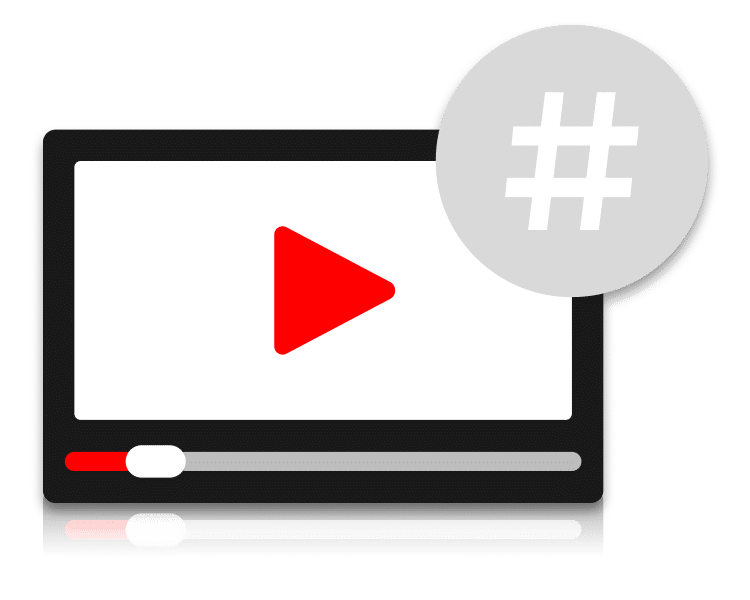SEO Tags and Video Marketing
This year, video has triumphed as one of the most effective content mediums in the digital world and shows no sign of stopping in the new year. In 2019, video is expected to attract an amazing 80% of all web traffic!
Video has the power to improve your search engine rankings, boost online engagement, and increase return-on-investment for your marketing efforts. In fact, video can increase organic traffic to your site and social channels by 157%.
You know what’s even better? Today’s technology and resources make it easy to create your own videos to help promote your practice. Sometimes, it’s as simple as filming a 30 second video with your newest smartphone, other times, you may want to invest in a professional video taped at your office. No matter which method you use, there are search engine optimization techniques that can help you ensure your target audience actually sees your videos.
Below you’ll learn the top 4 crucial elements you will need to optimize your video marketing.
Locally Optimized Titles and Descriptions
Title tags and descriptions can help you target your ideal audience. These little pieces of copy can make a big difference!
The title tag is the title that displays on a search engine results page. This should normally be between 50 and 60 characters. Any more and you won’t be able to see the entire title display on the SERP. However, if your description is longer, be sure to place the most important part of the text at the beginning of the title so your audience will be able to get the gist of your video.
Your video’s title should clearly communicate the topic of the video in just a few words. There is no need to draft a poetic title tag, just strip the language down to what is needed to describe the video. Include the most important details of your video in the title and try to feature a keyword or phrase. Secondary characteristics can still be mentioned in the meta description.
A meta description is a short synopsis of your video or webpage that also appears on a SERP. Your meta description should be between 160 and 200 characters. Like title tags, longer descriptions won’t completely show on a search engine results page. A well-written meta description also gives your audience an understanding of what your video is about before they even click the play button.
Both of these components can be search engine optimized for your industry, specialty, and location. Try using keywords in your title tags and meta descriptions to attract your ideal audience to your video. To learn how to brainstorm keywords, check out this blog.
To locally optimize your title tags and meta descriptions, be sure to input information about your community, such as the county or city your practice is located in. You may also want to appeal to the specific area. For example, if you’re a veterinarian in a heavily wooded area, you may make a video on tick care and optimize it for your location.
Closed Captioning
Closed captions are the words that appear on the bottom of the screen to help those who are hard of hearing follow along with a video.
This feature is especially useful for hearing impaired persons and makes your video more accessible. However, closed captioning is also beneficial to those who may have left their headphones at home or are scrolling on their subway commute. Many people choose to watch videos without sound. In fact, a reported 85% of Facebook videos are viewed with the sound off.
If you don’t have the time to edit your video to feature closed captioning, don’t worry! Both Facebook and YouTube have options that enable you to turn on closed captioning. However, you will want to review the captions to make sure they are accurate and edit where necessary.
Closed captioning can also help improve your search engine rankings. Making closed captioning available may increase the average watch time and encourage more engagement with your video. This will indicate to search engine algorithms that your video is valuable to the audience, thus boosting its ranking.
The video’s accessibility can also help your SEO efforts. When optimizing for accessibility to the hearing impaired, the same elements, such as closed captioning and audio transcription, actually work overtime to appeal to Google’s algorithm.
Audio Transcription
As mentioned above, audio transcription can also positively impact your video’s search engine rankings. Transcripts put your audio into words so that both web users and search engines can browse the information in your video. Transcription is different than closed captioning because it appears in paragraph form beneath your video, not on the video screen.
The text transcripts, unlike audio, are crawlable by search engines. This means your video is indexable, or visible to search engines that can then populate your video on related SERPs. Placing keywords into your transcripts will further help the algorithm find your video and place it in front of your target audience.
Video Tags
 Video tags are brief words or terms that help identify the categories or topics that your video covers.
Video tags are brief words or terms that help identify the categories or topics that your video covers.
SEO tags perform best when the tags are split into 50% specific terms and 50% generic terms. The first half will directly describe the video’s purpose or topic with targeted terminology. So, if your video tells the story of how chiropractic helped a man recover from an auto accident injury, you could use tags like “chiropractic”, “personal injury”, or “spinal injury and chiropractic”.
The second half of your video tags can be emotion or genre based. For the example above, you could use the tags “miracle”, “inspiring”, or “natural healthcare”.
When posting videos with similar topics, use some of the same keywords for each upload. Over time, this will help your audience and search engines acknowledge you as a reputable source of information for that subject.
Be sure that the audio, closed captioning, and text transcript reflect the video tags. This consistency will better your chances of being found through search engine results.
Learn more with our video
Are you more of an auditory learner? Check out our video above to learn about these video marketing best practices. Want to chat with us directly? Give us a call to speak with one of our knowledgeable Internet Consultants about your marketing goals.
More resources to help you learn how to reach your business goals
Should You Focus on SEO or Adwords? How to Leverage Both For Your Business
Top 5 Tips to Help You Succeed with Pay-Per-Click Marketing Packages
What Google Ads Changes Mean For Your Business
PGNlbnRlcj48ZGl2IGRhdGEtaWQ9Ijk4ZGQ2MWYzOGQiIGNsYXNzPSJsaXZlY2hhdF9idXR0b24iIG9uY2xpY2s9InBhcmVudC5MQ19BUEkub3Blbl9jaGF0X3dpbmRvdyh7c291cmNlOidtaW5pbWl6ZWQnfSk7IHJldHVybiBmYWxzZSI+PGEgaHJlZj0iIyI+PGltZyBzcmM9Imh0dHBzOi8vaW1hdHJpeC5jb20vd3AtY29udGVudC91cGxvYWRzLzIwMTgvMDUvbGl2ZS1jaGF0LWJsb2ctMS5qcGciIGFsdD0iaU1hdHJpeCBMaXZlQ2hhdCIgd2lkdGg9IjgwMHB4IiBoZWlnaHQ9IjIyNXB4IiBib3JkZXI9IjAiPjwvYT48L2Rpdj48L2NlbnRlcj4=



